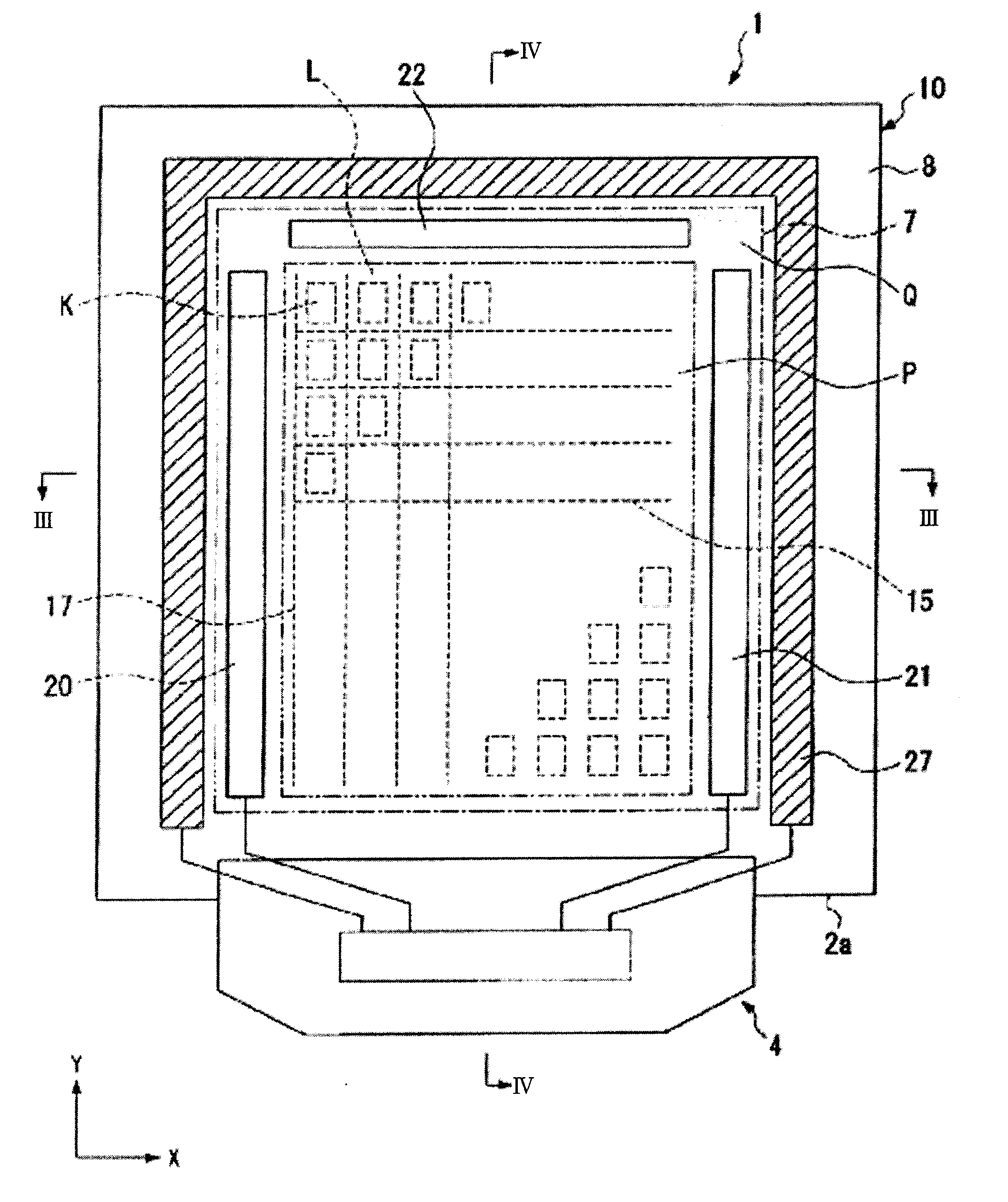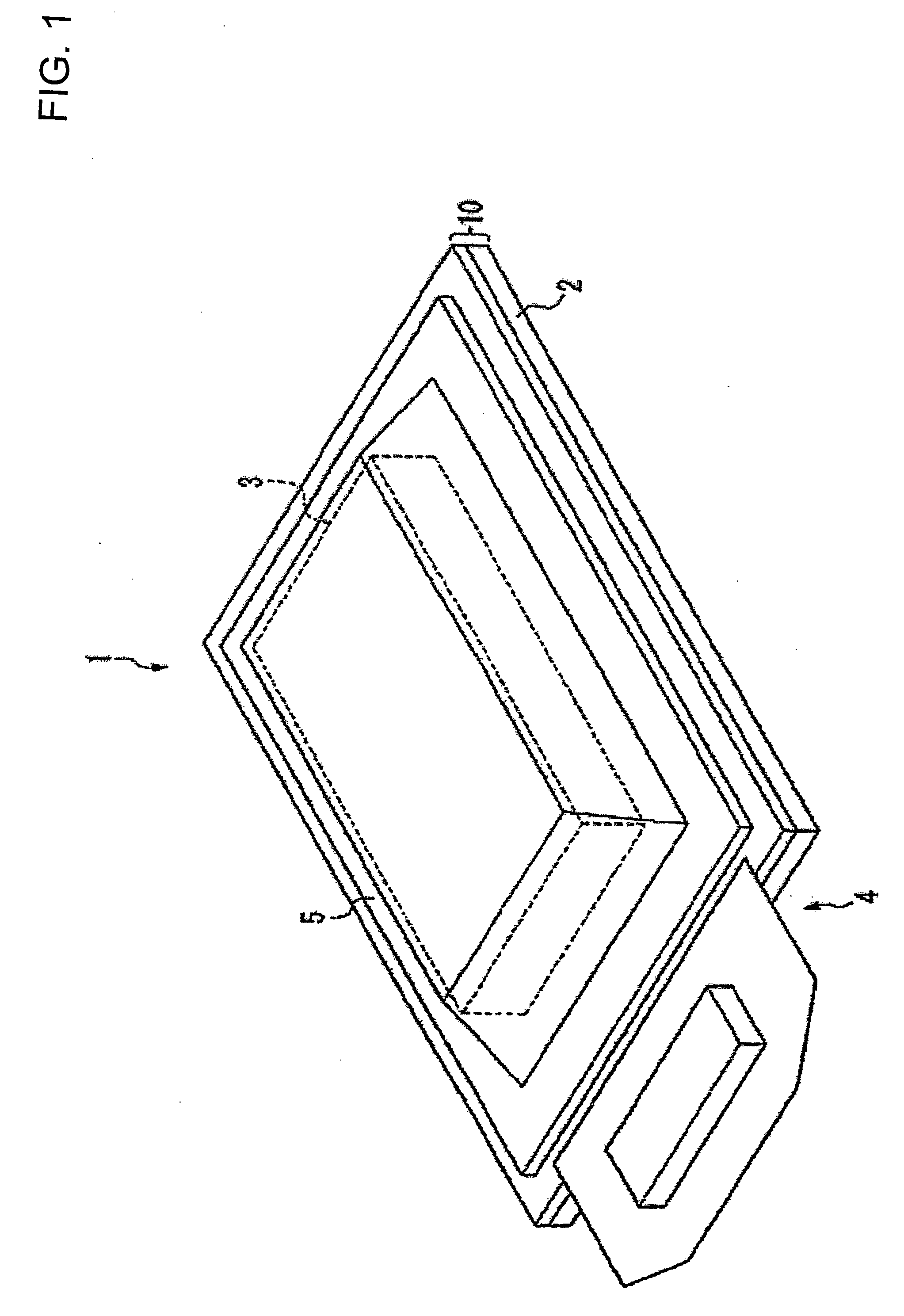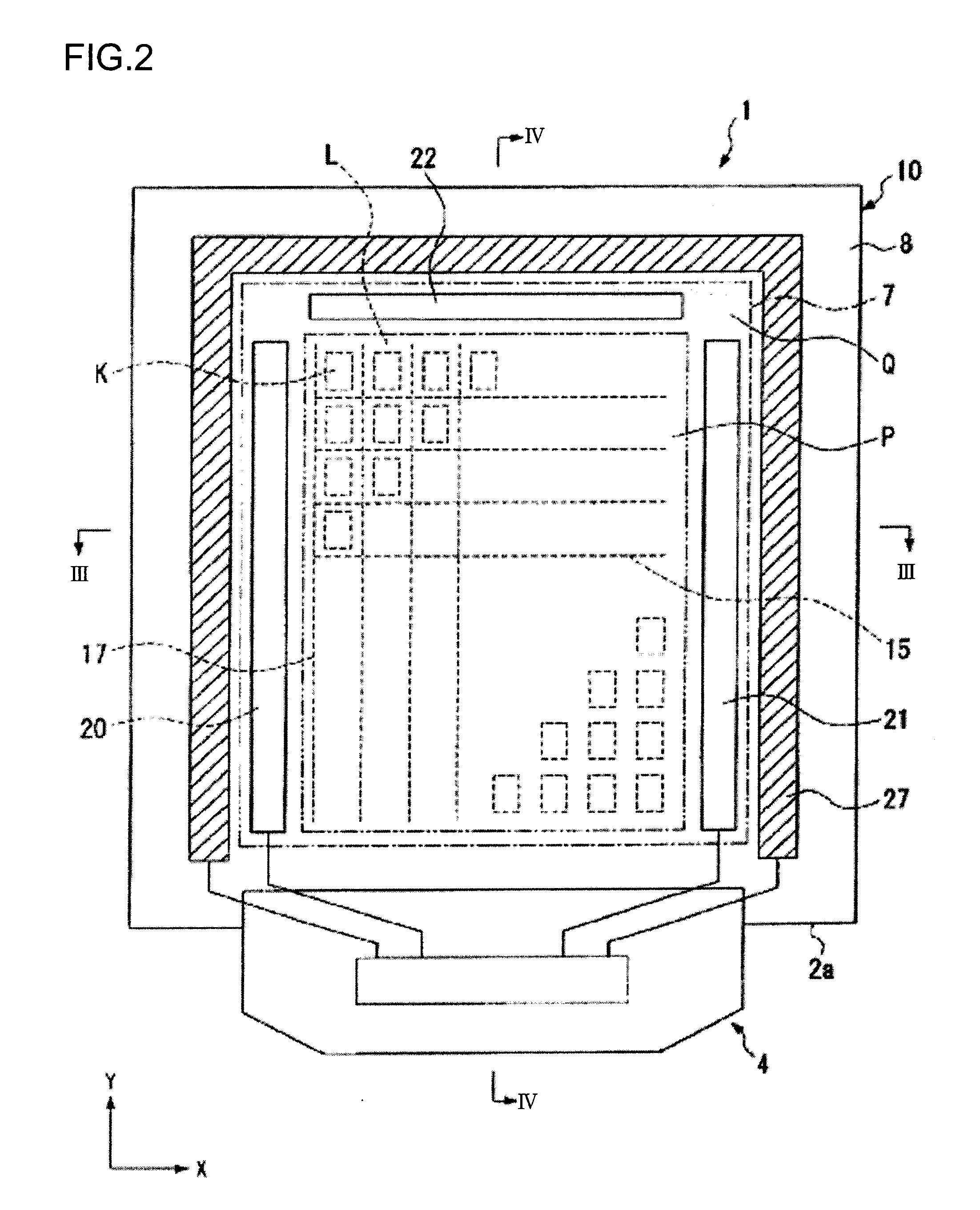Light-emitting device and electronic apparatus
a technology of light-emitting devices and electronic devices, which is applied in the direction of discharge tubes/lamp details, wing accessories, discharge tubes luminescnet screens, etc., can solve the problems of increased manufacturing process complexity, reduced display contrast, and deterioration of contrast, so as to suppress manufacturing costs, improve display contrast, and suppress light reflection
- Summary
- Abstract
- Description
- Claims
- Application Information
AI Technical Summary
Benefits of technology
Problems solved by technology
Method used
Image
Examples
first embodiment
[0041]A first embodiment of the invention will now be described with reference to the accompanying drawings. In the accompanying drawings, the scales of respective elements are suitably changed so that the elements can be clearly recognized.
[0042]FIG. 1 is a perspective view schematically showing the overall configuration of an organic EL device 1.
[0043]The organic EL device 1 includes a base substrate 10 having circuit elements or wiring lines, an insulating layer, and the like formed on a substrate 2, an organic EL element 3 formed on the base substrate 10, and an external circuit unit 4 attached to an end of the base substrate 10. The organic EL element 3 emits light according to an electrical signal which is supplied from the external circuit unit 4, such that an image or a moving picture is displayed. In addition, a sealing member 5 is provided to cover the organic EL element 3 and the base substrate 10. The organic EL device 1 exemplified in the present embodiment is an active...
second embodiment
[0085]Next, a second embodiment of the invention will be described. Similarly to the first embodiment, in the following drawings, the scales of the elements are suitably changed so that the elements can be clearly recognized. In addition, the same elements as those of the first embodiment are represented by the same reference numerals and the descriptions thereof will be omitted. In the present embodiment, since the configuration of the half mirror is different from that of the first embodiment, the present embodiment will be described with laying emphasis on this difference.
[0086]FIG. 9 is a schematic diagram showing the cross-section of an organic EL device 200 according to the second embodiment of the invention.
[0087]The organic EL device 200 includes a base substrate 10 in which circuit elements or wiring lines and an insulating layer formed on a substrate 2, an organic EL element 3 formed on the base substrate 10, and an external circuit unit 4 attached to an end 2a (FIG. 2) of...
PUM
 Login to View More
Login to View More Abstract
Description
Claims
Application Information
 Login to View More
Login to View More - R&D
- Intellectual Property
- Life Sciences
- Materials
- Tech Scout
- Unparalleled Data Quality
- Higher Quality Content
- 60% Fewer Hallucinations
Browse by: Latest US Patents, China's latest patents, Technical Efficacy Thesaurus, Application Domain, Technology Topic, Popular Technical Reports.
© 2025 PatSnap. All rights reserved.Legal|Privacy policy|Modern Slavery Act Transparency Statement|Sitemap|About US| Contact US: help@patsnap.com



